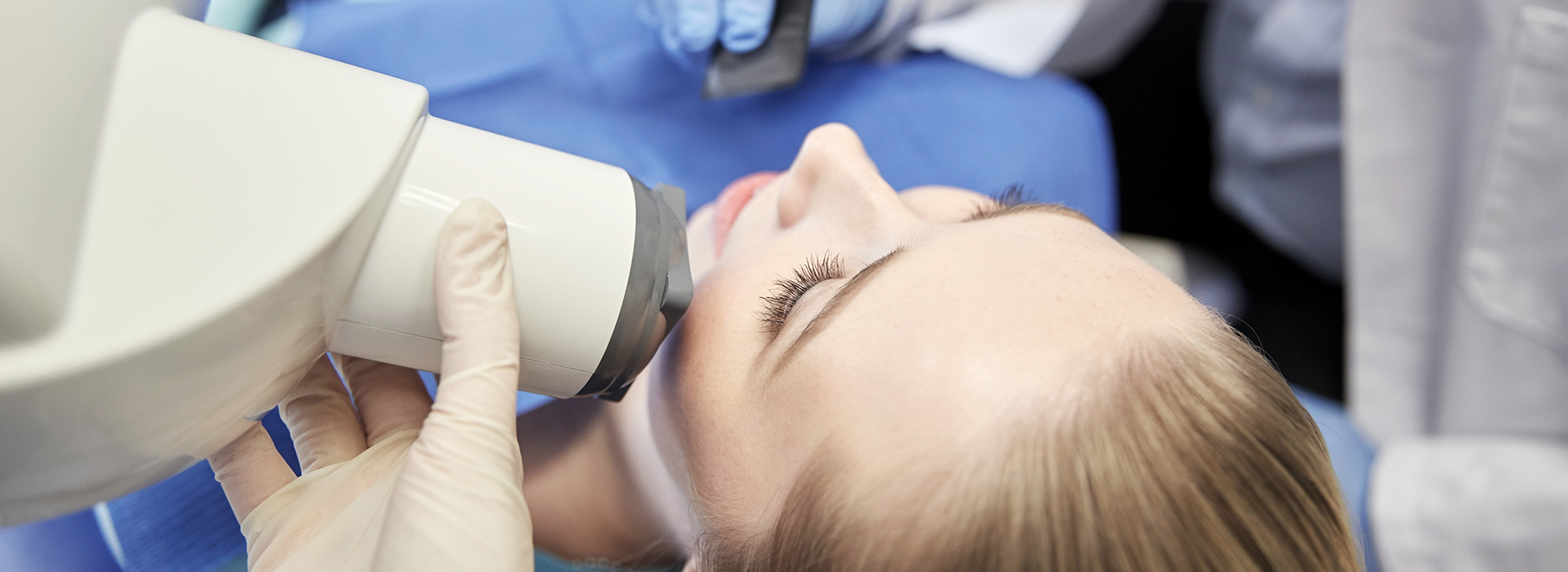
Digital radiography replaces traditional film with electronic sensors and computer imaging, transforming how dentists see and evaluate oral health. Instead of waiting for film to develop, clinicians can view high-resolution images within seconds. That immediacy helps patients understand findings in real time and allows the dental team to move from diagnosis to treatment planning much more efficiently.
For patients, the switch to digital imaging is about more than convenience: it provides clearer images that highlight subtleties such as early decay, changes in bone level, or the edges of previous restorations. These details often make the difference in catching problems earlier, when treatment is less invasive and outcomes are more predictable. The process is straightforward, and our staff takes time to explain each image so patients feel informed about their care.
At Callahan Family Dentistry, digital radiography is an integral part of routine exams and complex procedures alike. We use the technology to build a comprehensive visual record of oral health that supports better decision-making and gives patients a concrete basis for understanding recommended care.
Digital radiography relies on compact sensors—placed briefly in the mouth or positioned externally—to record x-ray data and deliver digital files to a computer. These sensors convert x-ray exposure into electronic signals that can be processed instantly, producing crisp images that can be enlarged, adjusted for contrast, and analyzed from multiple angles. That flexibility helps clinicians spot issues that might be missed on conventional film.
Because images appear immediately, the team can retake poorly positioned shots on the spot rather than asking patients to return for additional appointments. This reduces the time spent in the operatory and ensures diagnostic images meet the standards needed for accurate assessment. The workflow is designed to be efficient while maintaining careful attention to technique and patient comfort.
The software that accompanies digital sensors also includes tools for measurement and annotation, which are helpful when planning restorative work, monitoring progression of conditions, or communicating with specialists. These tools do not replace clinical judgment but augment it by presenting information in an accessible, actionable format.
One of the most important advantages of digital radiography is reduced radiation exposure compared with traditional film-based systems. Advances in sensor sensitivity and image processing allow diagnostically useful pictures to be produced with lower doses. Clinicians still follow established safety protocols—such as using lead aprons and limiting exposures to what is clinically necessary—to protect patients of all ages.
Patients also benefit from a more comfortable experience. Digital sensors are thin and ergonomically designed; the speed of capture minimizes time spent holding a sensor in place. For children, older adults, or anyone with a sensitive gag reflex, the shorter appointment time and fewer repeat exposures contribute to a calmer visit.
Beyond individual comfort, digital imaging is inherently cleaner and more environmentally friendly because it eliminates the chemicals and paper processing associated with film. That reduction in waste is consistent with modern practice standards and helps the office operate with a smaller ecological footprint.
Digital images become part of the patient’s electronic record immediately, allowing the dental team to compare current and past images side by side. This capability is particularly valuable for tracking the progression of conditions such as periodontal bone loss, recurrent decay around restorations, or healing after surgical procedures. Longitudinal comparisons allow for more informed clinical judgments and tailored treatment plans.
When planning restorations, implants, endodontic treatment, or orthodontic interventions, high-quality digital radiographs provide critical spatial and structural information. Clinicians use these images in concert with clinical examination to determine the most conservative and effective approach for each patient. The ability to crop, zoom, and measure within the image aids precision without adding complexity for patients.
Digital files are also useful in interdisciplinary care. With patient consent, images can be shared quickly and securely with specialists or labs to coordinate care, obtain second opinions, or confirm specifications for custom dental appliances. That speed of communication helps keep treatment on schedule and reduces the risk of miscommunication.
Once captured, digital radiographs are stored in a secure electronic health record that supports organized, retrievable patient histories. Digital archiving reduces the risk of lost or damaged films and makes it simpler to assemble a comprehensive clinical picture at future visits. Most systems also include backup measures to preserve records while protecting patient privacy.
The ability to transmit images electronically streamlines collaboration between providers. Whether coordinating with a specialist, confirming diagnostic details with a laboratory, or forwarding images to an insurance processor when needed, digital files travel quickly and retain diagnostic quality. This reduces delays that can otherwise slow a patient’s path to care.
Environmental benefits are a practical, often overlooked advantage: digital imaging eliminates the need for film and chemical developers, removing hazardous waste from the practice. For patients who value sustainability, digital radiography offers a modern alternative that aligns clinical quality with responsible stewardship.
Wrap-up: Digital radiography has changed how routine exams and complex dental treatments are planned and delivered—improving image clarity, reducing radiation exposure, and streamlining communication across the care team. Our approach centers on using this technology thoughtfully to enhance diagnosis, protect patient safety, and support efficient, well-coordinated care. If you’d like to learn more about how digital imaging is used during dental visits, please contact us for more information.
Our goal is to help every patient experience the benefits of good oral health and a beautiful smile. We value the trust you have placed in our office and strive to provide solutions that meet your dental needs and expectations of care.
